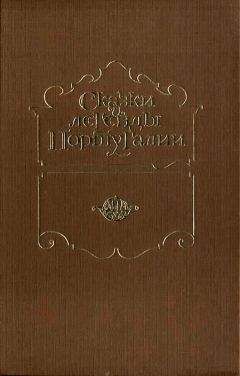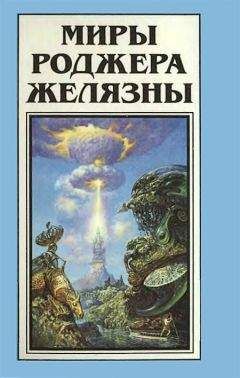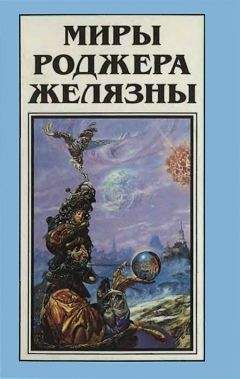Omery A.; Kasper, C.E.; Page, G.G. (1995). In Search of Nursing Science. Thousand Oaks, CA: Sage.
Orem, D.E. (1959). Guidelines for developing curriculae for the education of practical nurses. Washington, D.C.: U.S. Department of Health, Education & Welfare.
Orem, D.E. (1971). Nursing: Concepts of Practice. New York: McG raw-Hill.
Orem, D.E. (1991). Nursing Concepts of Practice. 4. utg. New York: Mosby.
Orem, D.E. (1995). Nursing Concepts of Practice. 5. utg. New York: Mosby.
Orlando, I.J. (1961). The Dynamic nurse-patient relationship. New York: G.P. Putnam’s sons.
Orlando, I.J. (1995). Det dynamiske forhold mellom sygeplejerske og patient. København: Munksgaard.
Parse, R.R. (red.) (1987). Nursing science: major paradigms, theories, and critiques. Philadelphia, PA: Saunders.
Pender, N.J. (1989). Languaging a Health Perspective for NANDA Taxonomy on Research and Theory. I: Carroll-Johnson, R.M., Paquette M.: Classification of Nursing Diagnoses. Proceedings of the Eighth Conference. North American Nursing Diagnosis Association. Philadelphia: JB Lippincott, s. 31–36.
Peplau, H. (1952). Interpersonal relations in Nursing. New York: G.P. Putnam’s sons.
Petersen, K.A. (red.) (1995). Praktikteori i sundhedsvidenskab. København: Akademisk Forlag.
Phillips, L.R.; Rempusheski, V.F. (1986). Caring for the frail elderly at home: toward a theoretical explanation of the dynamics of poor quality family caregiving. Advances in Nursing Science, 8(4): 62–84.
Phillips, S.S.; Benner, P. (1994). The Crisis of care: affirming and restoring caring practices in the helping professions. Washington, D.C.: Georgetown University Press.
Ploug Hansen, H.; Ramhøj, P. (1990). Sygepleje og kultur. Vård i Norden, 10(4): 4–5.
Popkess-Vawter, S. (1991). Wellness nursing diagnoses: to be or not to be? Nursing Diagnosis, 2(1): 19–25.
Radsma J. (1994). Caring and nursing: a dilemma. Journal of Advanced Nursing, 20(3): 444-9.
Ramh0j, P. (1991). Et kulturteoretisk perspektiv pä den kliniske sygepleje og den kliniske sygeplejeforskning. Perspektiv. Tillaeg til Tidsskrift for Sygeplejersker nr. 36, s. 16–31.
Reiley, D.E. (1976). Hvorfor et begrepsmessig rammeverk? Sykepleien, 63(3): 136–139. (Oversatt av Signe Valset).
Rihl, J.P; Roy, C. (1980). Conceptual models for nursing practice. 2. utg. New York: Appleton-Cencury-Crofts.
Rogers, M.E. (1970). An introduction to the theoretical basis of nursing. Philadelphia: F.A. Davis.
Rooke, L. (1994). Omvärdnad: erfarenhet – reflektion – teori. Lund: Studentlitteratur.
Rosen, G. (1993). A History of Public Health. Expanded edition. Baltimore: The Johns Hopkins University Press.
Rosenberg, C.E. (1987). The Care of Strangers. New York: Basic Books.
Rottkamp, B.C.; Hurley, M.E. (1991). Placement of Diagnoses within Taxonomy II: Development and Process. I: Carroll-Johnson, R.M.: Classification of Nursing Diagnoses. Proceedings of the Ninth Conference. North American Nursing Diagnosis Association. Philadelphia: JB Lippincott, s. 30–34.
Roy, S.C. (1982a). Theoretical Framework for the classification of Nursing Diagnosis. I Kim, M.J.; Moritz, D.A Classification of Nursing Diagnoses. Proceedings of the Third and Fourth National Conferences. New york: McGraw-Hill, s. 215–221.
Roy, C. (1970). Adaptation: A conceptual framework for nursing. Nursing Outlook, 18(3): 42–45.
Roy, S.C. (1982b). Historical Perspective of the Theoretical Framework for the Classification of Nursing Diagnosis. I: Kim, M.J.; Moritz, D.A.: Classification of Nursing Diagnoses. Proceedings of the Third and Fourth National Conferences. New York: McGraw-Hill, s. 235–246.
Roy, S.C. (1984). Framework for classification systems development: progress and issues. I: Kim, M.J.; McFarland, G.K.; McLane, A.M. (red.) Classification of Nursing Diagnoses. Proceedings of the Fifth National Conference. St. Louis: CV Mosby, s. 26–40.
Saba, V.K. (1991). The International Classification od Diseases (ICD): Classification of Nursing Diagnosis. I: Carroll-Johnson, R.M.: Classification of Nursing Diagnoses. Proceedings of the Ninth Conference. North American Nursing Diagnosis Association. Philadelphia: JB Lippincott, s. 14–18.
Sarvimäki, A. (1988). Knowledge in Interactive disciplines. (Research bulletin No. 68). Helsinki, Finland: University of Helsinki, Department of Education.
Scheel, M.E. (1994). Interaktionel sygeplejepraksis. Videnskap – etik og sygepleje. K0benhavn: Munksgaard.
Scheel, M. (1985). Vidensgrundlag – etik og sygepleje. K0benhavn: Munksgaard.
Scheel, M. (1990). Nel Noddings omsorgsetik. Et alternativ til pligtetik og nyttemoral. I: Jensen, T.; Jensen, L.U.; Kim, W.C. (red.): Grundlagsproblemer i sygeplejen – Etik, videnskabsteori, ledelse <& samfund. Ärhus: Philosophia.
Schlotfeldt, R. (1971). The significance of empirical research. Nursing Research, 20(2): 140–142.
Schön, D.A. (1983). The reflective practitioner: how professionals think in action. New York, NY Basic Books.
Schön, D.A. (1987). Educating the reflective practitioner: toward a new design for teaching and learning in the professions. San Francisco, CA: Jossey-Bass.
Sheppard, K.C. (1991). Altered protection. I Carroll-Johnson, R.M. (red.): Classification of Nursing Diagnoses: Proceedings of the Ninth Conference. North American Nursing Diagnosis Association. Philadelphia, PA: JB Lippincott.
Skretkowicz, V. (1992). Introduction. I: Nightingale, F. Notes on Nursing. (Revised, with additions). London: Scutari Press.
Skretkowicz, V. (1997). Historien om utviklingen og utgivelsen av “Notater om sykepleie”. I: Nightingale, F. (1997). Notater om sykepleie. Samlede utgaver. Oslo: Universitetsforlaget, ss. 212–240.
Skretkowicz, V. (1997). Introduksjon. I: Nightingale, F: (1997). Notater om sykepleie. Samlede utgaver. Oslo: Universitetsforlaget.
Smith, M.C. (1990). Pattern in nursing practice. Nursing Science Quarterly, 3: 57–59.
Sommerseth, E.; Holter, I.M.; 0ren, J. P.; Schwitsch, M.S. (1978). Debatten mä komme nä! Sykepleien, 65(4): 198–200.
Stevens, B. (1979). Nursing Theory Analysis, Application, Evaluation. Boston, CT: Little Brown.
St0vring, T. (1982). Hvorfor sykepleieteori? Sykepleien, 69(16): 16–17, 19.
Sveinbjarnardottir, E.; de Casterle, B.D. (1997). Mental illness in the family: an emotional experience. Issues in Mental Health Nursing. 18(1): 45–56.
Saether, M. (1983). Sykepleieteori – en umulig vei е gе. Sykepleien, 70(5): 22.
Taylor, R.L.; Watson, J. (1989). They shall not hurt: human suffering and human caring. Boulder, CO: Colorado Associated University Press.
Taylor, S.G. (1989). An interpretation of family within Orem’s general theory of nursing. Nursing Science Quarterly2(5): 131–137.
Thompson, J.L. (1992). Identity politics, essentialism, and constructions of “home” in nursing. I Critique, resistance, and action: working papers in the politics of nursing. New York, NY: National League for Nursing Publications.
Thompson, J.L. (1985). Practical discourse in nursing: Going beyond empiricism and historicism. Advances in Nursing Science, 7(4): 59–71.
Torres, G.; Yura, H. (1974). Today’s conceptual framework: Its relationship to the curriculum development process. New York: National League for Nursing.
Travelbee, J. (1966). Interpersonal Aspects of Nursing. Philadelphia, Pennsylvania: F.A. Davis.
Travelbee, J. (1971). Interpersonal Aspects of Nursing. 2. utg. Philadelphia, Pennsylvania: F.A. Davis.
Traynor, M. (1997). Postmodern research: no grounding or privilege, just freefloating trouble making. Nursing Inquiry, 4(2): 99-107.
Tunset, A.B.; 0verb0, R. (1984). Brukes sykepleieprosessen i praksis? Sykepleien, 71(4): 6-10, 32.
Tunset, A.B.; 0verb0, R. (1985). Teori og praksis i sykepleien. Er fokus det samme? Sykepleien, 72(4): 11–15, 25.
Utne, I. (1985). B0r gruppesykepleie forkastes til fordel for primaersykepleie? Sykepleien, 72(12): 16–18, 29.
Vaillot, M.C. (1969). Eksistensialismen. En forpliktende filosofi. Sykepleien, 56(6): 115–117, 129. (oversatt av Agnes Vesterhus).
Visintainer, M. (1986). The nature of knowledge and theory in nursing. Image, 18(2): 33
Wald, F.S.; Leonard, R.C. (1964). Towards development of nursing practice theory. Nursing Research, 13(4); 309–313.
Walker, L.; Avant, K.A. (1989). Strategies for theory construction in nursing. 2. utg. Norwalk, CT: Appleton & Lange.
Walker, L.O. (1971). Toward a clearer understanding of the concept of nursing theory. Nursing Research, 20(5): 428–435.
Warren, J.J. (1-991). Implications of Introducing Axes into a Classification System. I: Carroll-Johnson, R.M.: Classification of Nursing Diagnoses. Proceedings of the Ninth Conference. North American Nursing Diagnosis Association. Philadelphia: JB Lippincott, s. 38–44.
Watson, J. (1988). Nursing: human science and human care: a theory of nursing. New York: National League for Nursing.
Watson, J. (1990). Caring knowledge and informed moral passion. Advances in Nursing Science, 13 (1): 15–24.
Watson, J. (1981). Nursing’s scientific quest. Nursing Outlook, 29: 413–416.
Webster, G.A. (1984). Nomenclature and classification system development. I: Kim, M.J.; McFarland, G.K.; McLane, A.M. (red.) Classification of Nursing Diagnoses. Proceedings of the Fifth National Conference. St. Louis: CV Mosby, s. 14–23.
Webster,G.A; Brencick, J.M. (1994). I: Carroll-Johnson, R.M.; Paquette, M. (1994): Nomenclature and Classification Systems: 10 years later. Classification of Nursing Diagnoses. Proceedings of the Tenth Conference. North American Nursing Diagnosis Association. Philadelphia: JB Lippincott, s. 63–69.
Wetlesen, J. (1989). Praktisk kunnskap i sykepleievitenskapen. I Wetlesen Kirkevold: Praktisk kunnskap i Sykepleievitenskap. Publis. serie 31 1989, Institutt for Sykepleievitenskap.
Wiedenbach, E. (1964). Clinical Nursning: A Helping Art. New York: Springer-Verlag.
Winstead-Fry, P. (1990). Visions of Rogers’ science-based nursing. Reflections on death as a process: a response to a study of the experience of dying. NLN publications, nr. 15, s. 229-36.
Woodham-Smith, C. (1982/1950). Florence Nightingale. 1820–1910. London: Constable.
Woods, N.F. (1987). Response: Early morning musings on the passion for substance. Scholarly Inquiry for Nursing Practice, 1(1): 25–28.
PN – Registered nurse, дипломированная медсестра. PhD – Philosophy Doctor – доктор философии.
NANDA – North American Nursing Diagnosis Assosiation.
I. В связи со своими особыми пристрастиями и привязанностями люди оказываются вовлеченными в контекст. II. вынесение суждения о возможностях адаптации пациента к тому или иному контексту.





